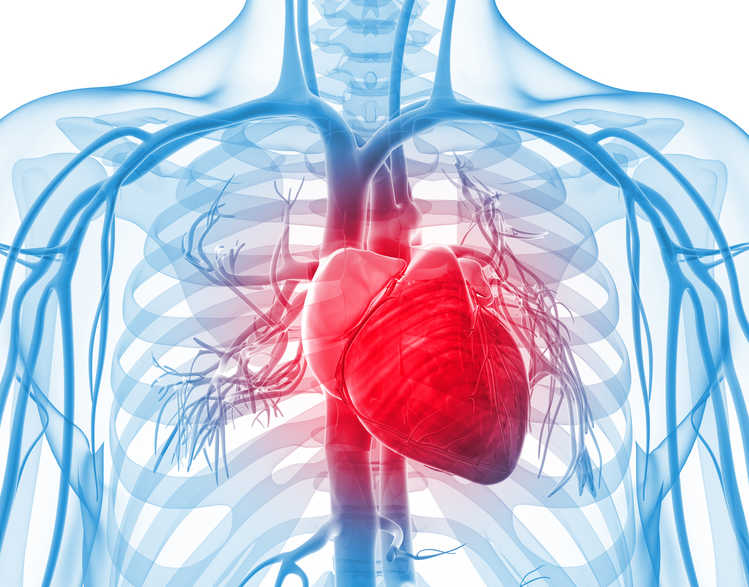Oxygen Therapy in AMI?

EJRC Article Review
A new perspective for Oxygen Therapy in Suspected Acute Myocardial Infarction
Traditional treatment for patients with suspected acute myocardial infarction (AMI) includes morphine, oxygen, nitroglycerine and aspirin. According to the European Society of Cardiology Guidelines for the management of AMI, oxygen is recommended in patients with ST-segment elevation in case of hypoxaemia (SaO2 < 90% or PaO2 < 60 mmHg) [1] and in patients without persistent ST-segment elevation in case of SaO2 < 90% or respiratory distress [2]. The rationale is to increase oxygen delivery to the ischaemic myocardium, reducing infarct size and subsequent complications such as heart failure or arrhythmias. However, the benefit of supplemental oxygen in patients with suspected AMI without hypoxaemia is far less certain.
To look at this issue, Hofmann and colleagues recently conducted the Determination of the Role of Oxygen in Suspected Acute Myocardial Infarction (DETO2X-AMI) trial, a multicentre controlled open-label study based on nationwide Swedish registries [3]. Adult patients presenting with symptoms suggestive of AMI for less than 6 hours, a SaO2 ≥ 90% without ongoing oxygen therapy, EKG changes indicating ischaemia or a positive troponin T or I level, were randomly assigned to receive either supplemental oxygen (6 L/min by open face mask for 6 to 12 hours) or ambient air. A total of 6629 patients were enrolled in the study, 6243 (94.2%) because of chest pain. The final diagnosis was AMI in 5010 (75.6%) patients. Both populations received the same level of care. The median SaO2 at randomisation was 97%. The median SaO2 at the end of treatment was 99% in the oxygen group (median duration of O2 therapy of 11.6 hours) and 97% in the ambient air group (P < 0.001). Hypoxaemia requiring supplemental O2 administration was significantly higher in the ambient-air group. The primary end point of death from any cause within 1 year after randomisation occurred in 5.0% of patients (166 of 3311) in the oxygen group and 5.1% of patients (168 of 3318) in the ambient-air group (hazard ratio, 0.97; P=0.80). The results were consistent across all prespecified subgroups. Death from any cause within 30 days after randomisation, rehospitalisation with AMI and the composite of these two endpoints at 30 and 365 days were similar between the oxygen and ambient-air group. There was no significant difference between the two groups in myocardial injury, assessed using the median of the highest troponin-T level occurring during hospitalisation.
The DETO2X-AMI is the largest trial to date investigating the effect of oxygen therapy in patients with suspected IMA with no hypoxaemia at baseline, both in the prehospital and hospital setting. Normoxaemia was defined according to SaO2 levels, with no reference to PaO2 levels. Although the sample size calculation may have introduced a bias in the trial planning, the results of the study suggest that supplemental oxygen provides no benefit to these patients, thus not supporting its routine use in their initial management. Although mechanisms underlying physiological and biochemical adaptation to myocardial ischaemia are complex, this pragmatic trial, with its patient-centered outcome based on mortality and rehospitalisation, suggests the need for clinical practice to change. Definitive recommendations regarding the routine use of oxygen in patients with AMI and no hypoxaemia are warranted.
Article review prepared and submitted by EJRC member Cristina Dominedò, MD, Department of Anesthesiology and Intensive Care, Catholic University of the Sacred Heart, A. Gemelli Hospital, Rome, Italy.
References
- Ibanez B et al. 2017 ESC Guidelines for the management of acute myocardial infarction in patients presenting with ST-segment elevation: The Task Force for the management of acute myocardial infarction in patients presenting with ST-segment elevation of the European Society of Cardiology (ESC). Eur Heart J. 2017 Aug 26.
- Roffi M et al. 2015 ESC Guidelines for the management of acute coronary syndromes in patients presenting without persistent ST-segment elevation. European Heart Journal (2016) 37, 267–315.
- Hofmann R et al. Oxygen Therapy in Suspected Acute Myocardial Infarction. N Engl J Med. 2017 Sep 28;377(13):1240-1249.